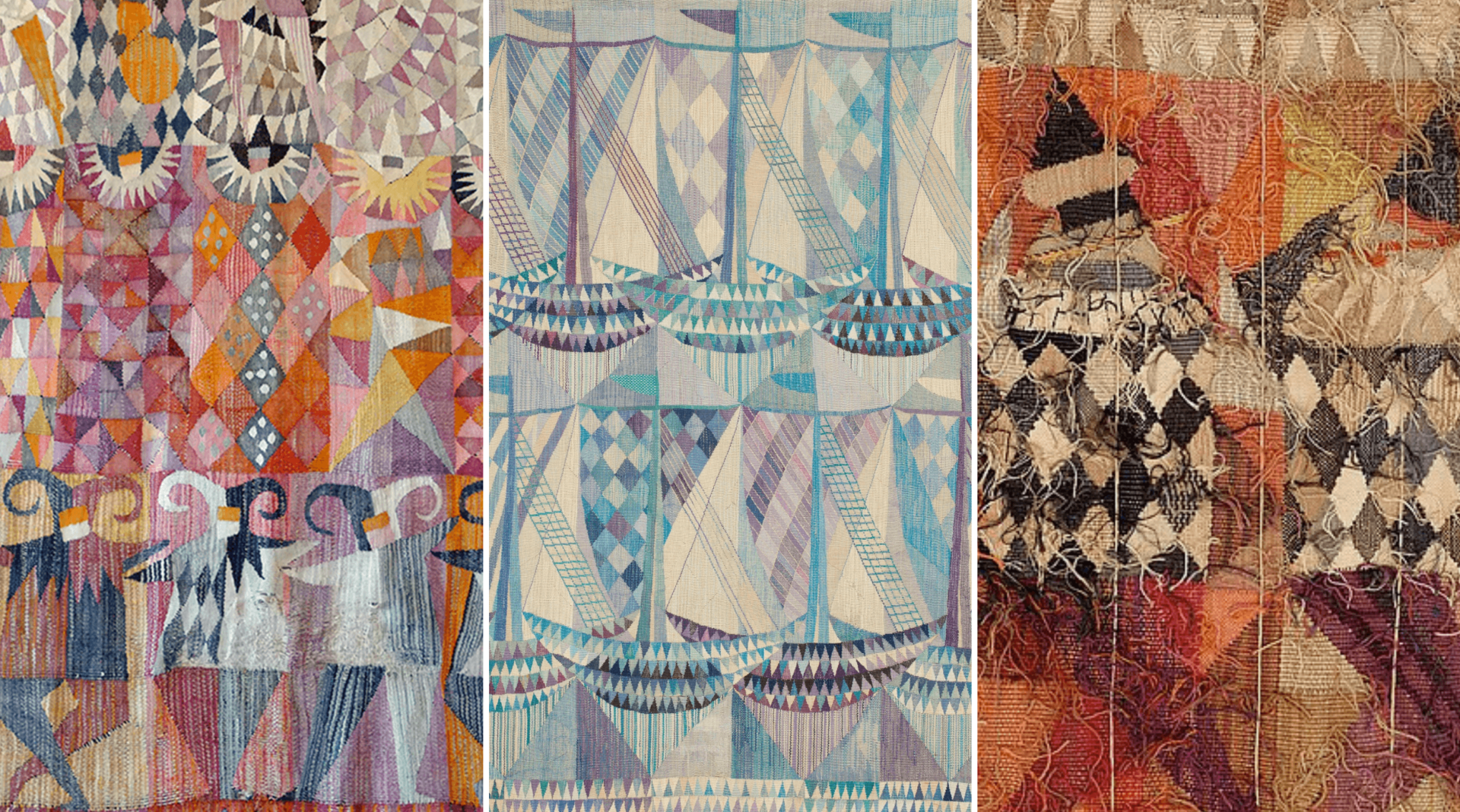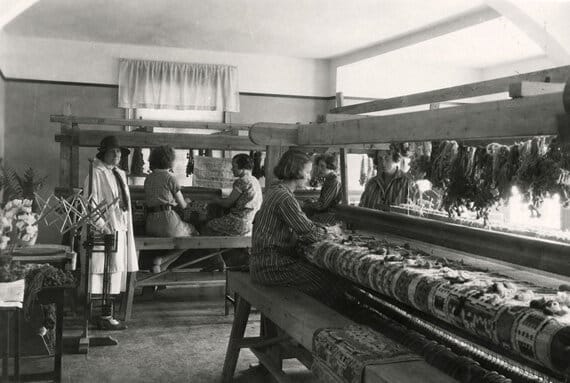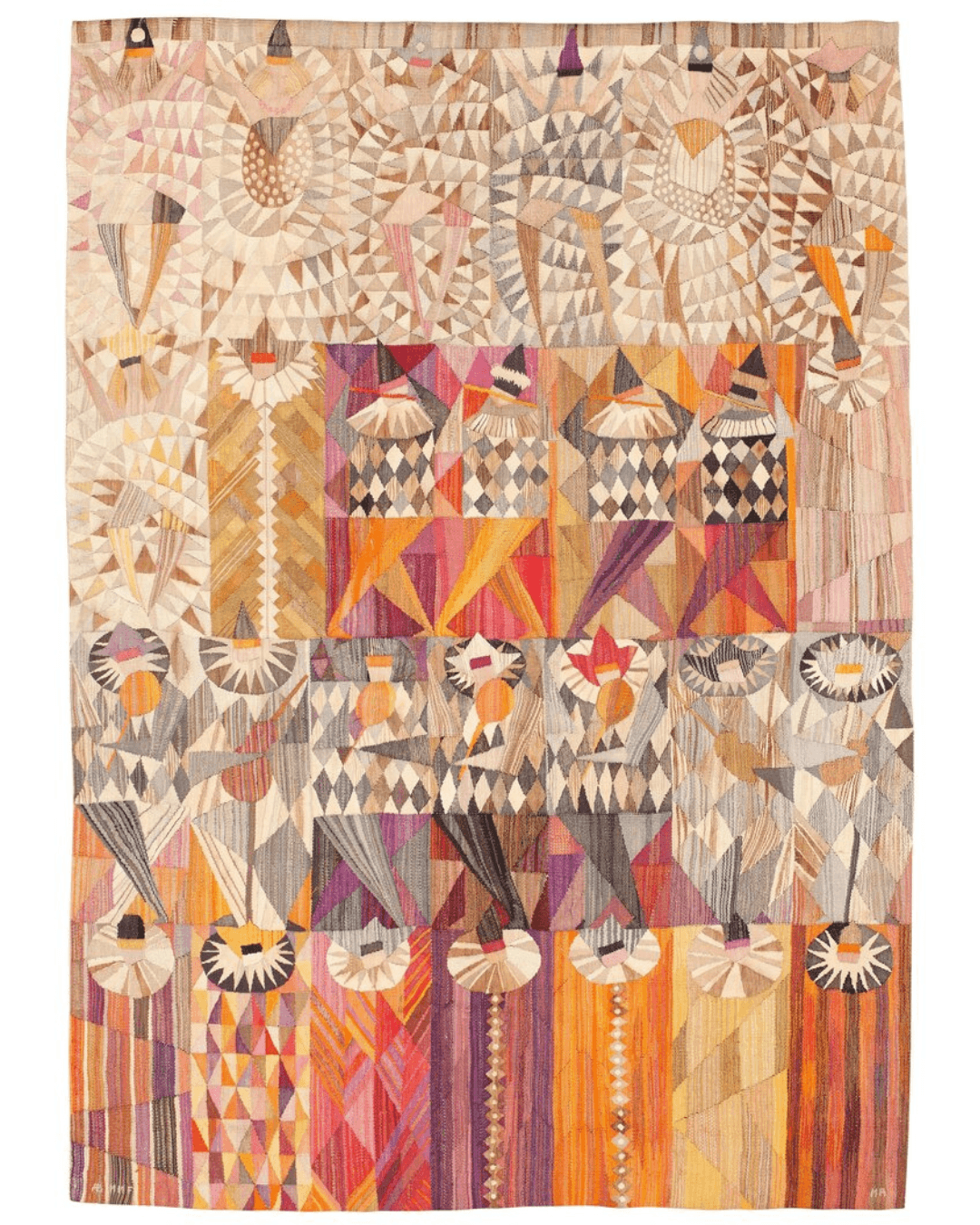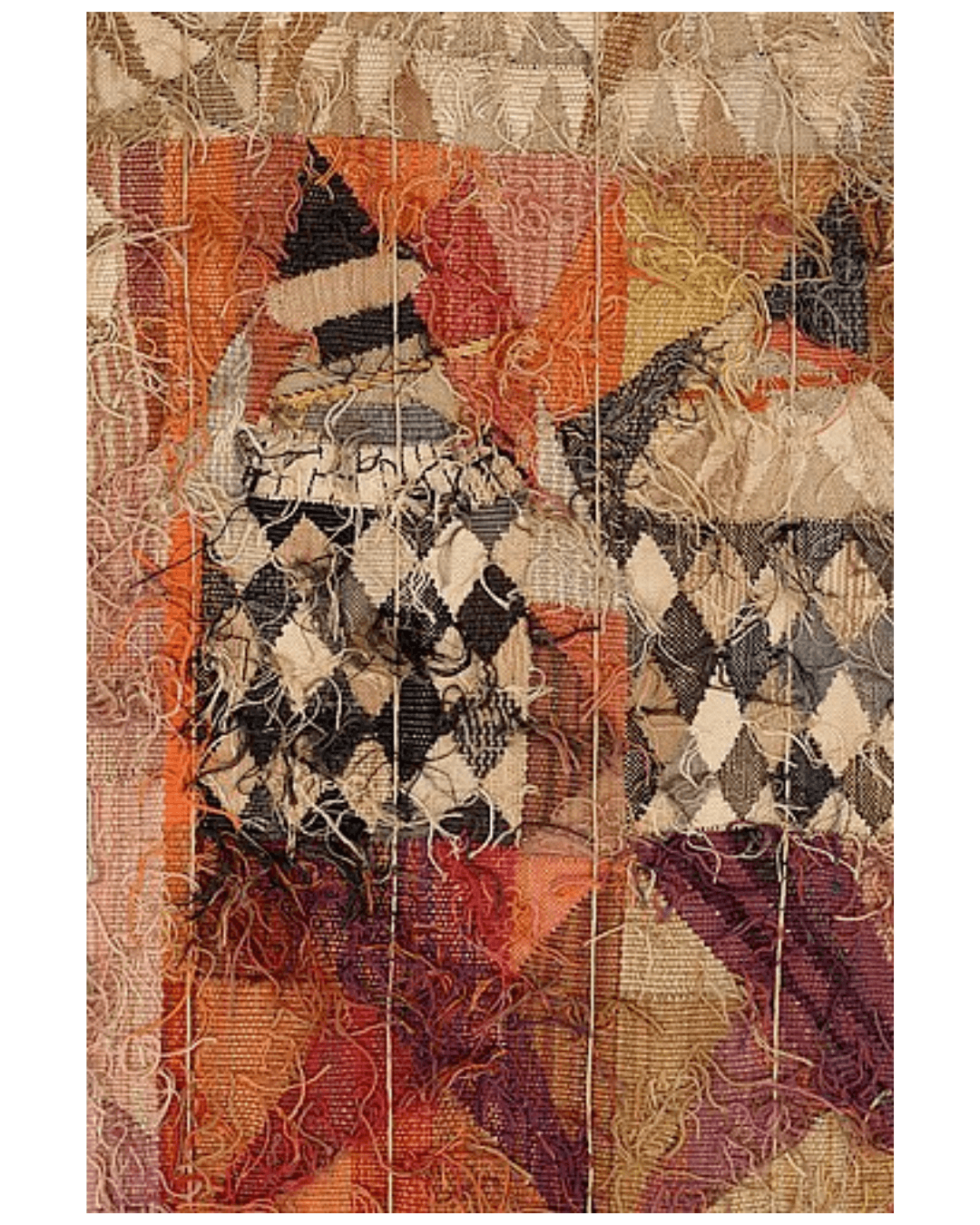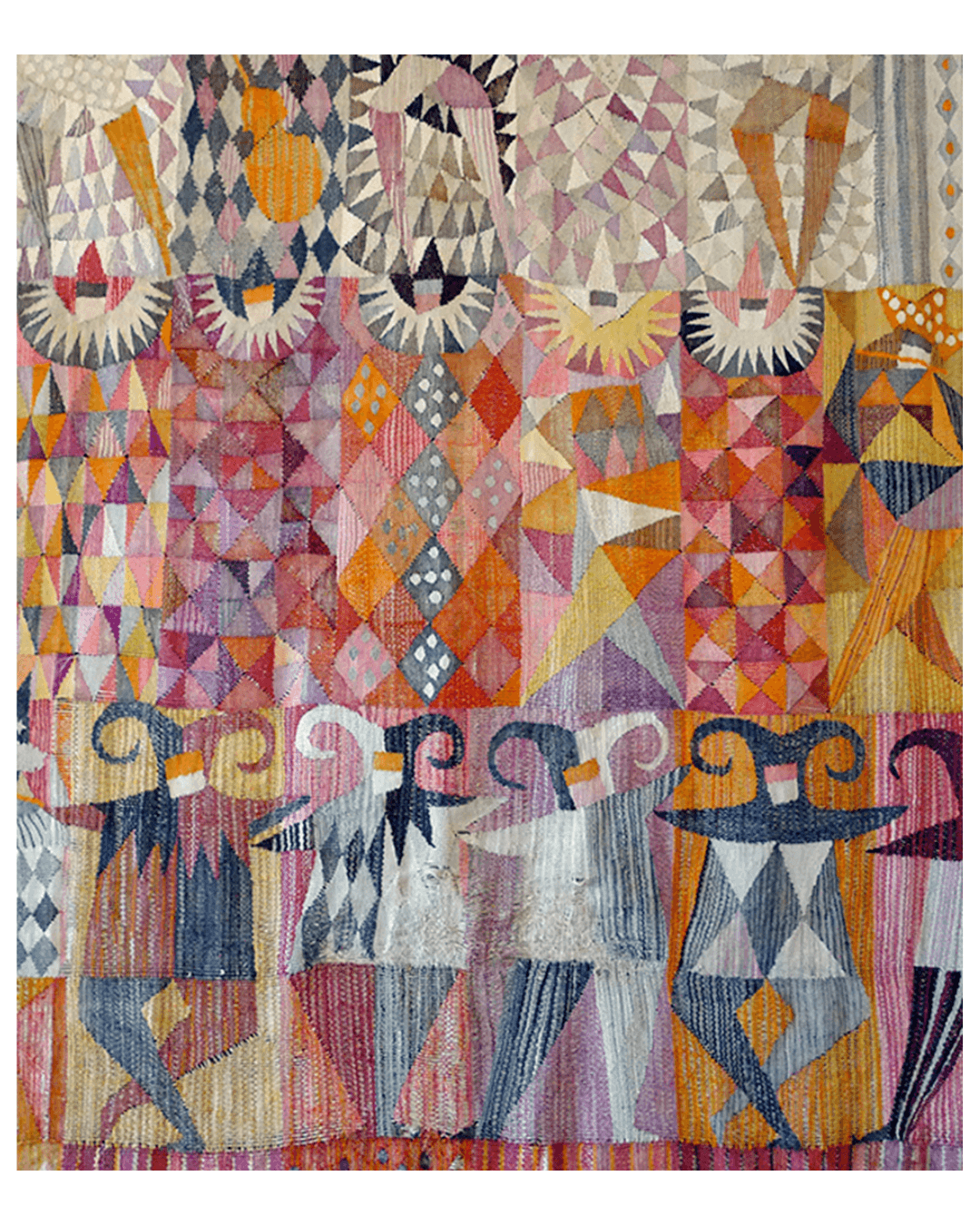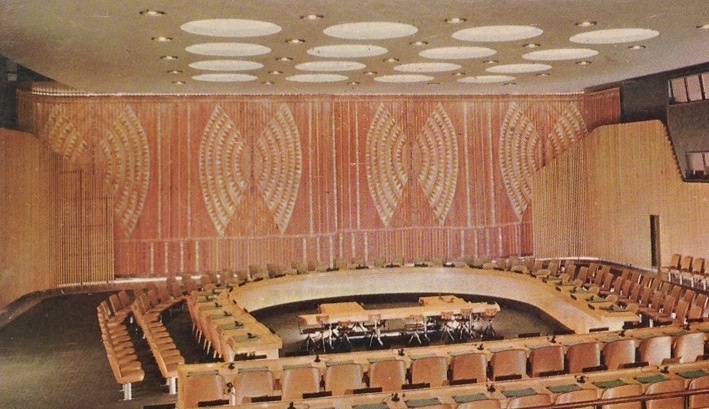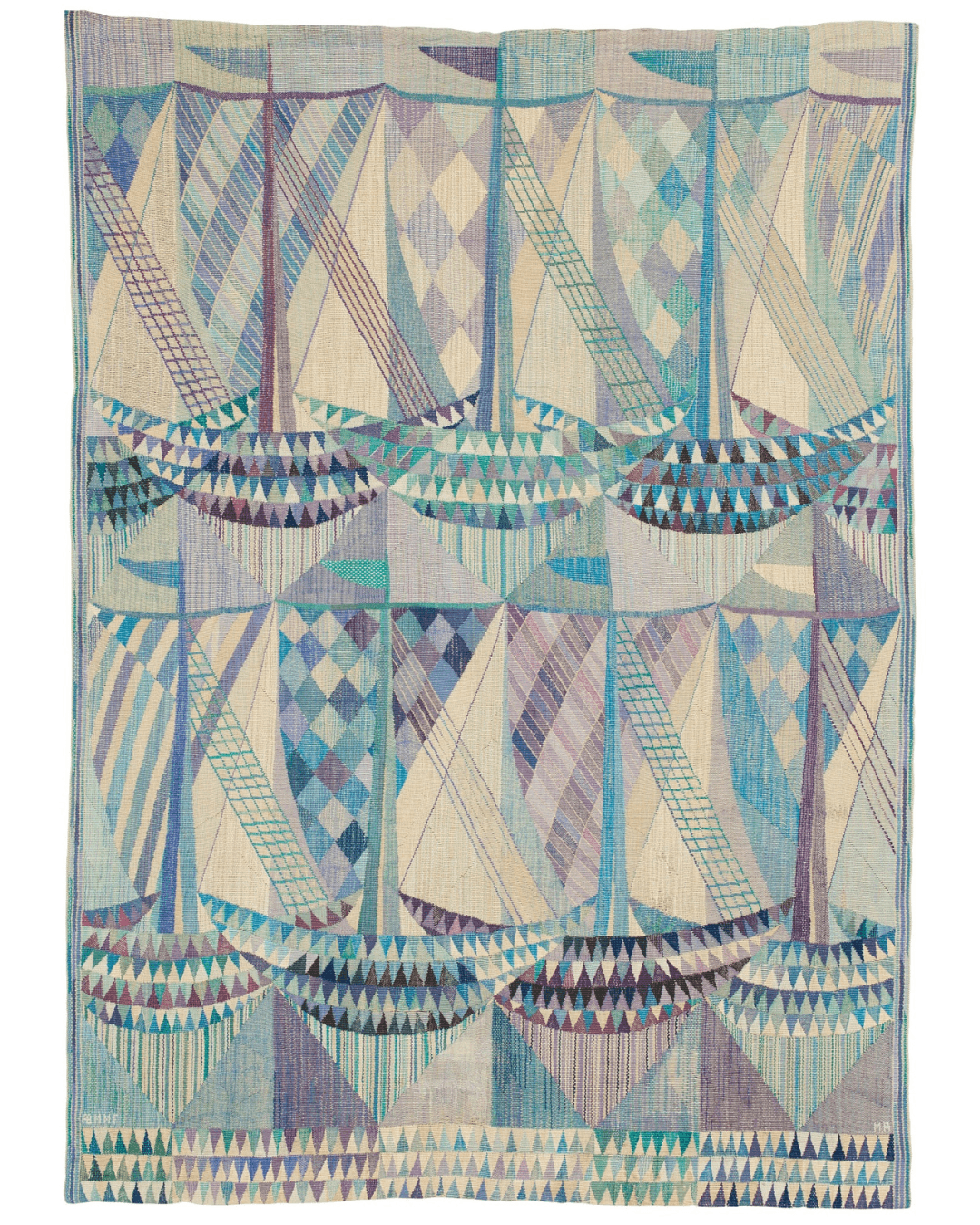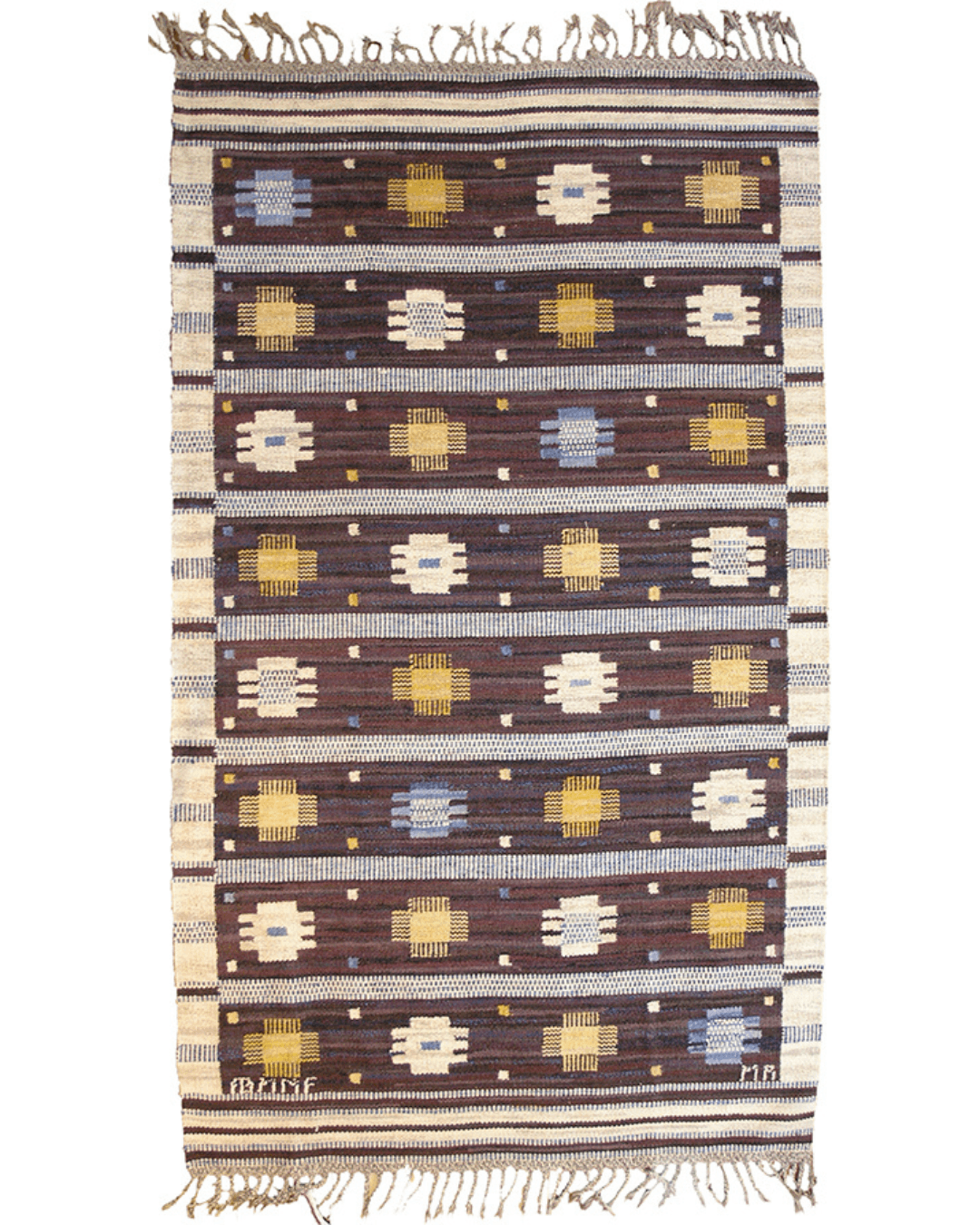This week we’d like to explore and celebrate the work of Swedish tapestry and rug designer Marianne Richter.
She lived from 1916 – 2010 and was one of three main designers at an innovative Swedish workshop in the 40s, 50s, and 60s which was started by Märta Måås-Fjetterström. The workshop found inspiration from local Swedish plants, animals, stylised oriental patterns, and the lights and colours of Scandinavian summers.
Marianne Richter became known for her use of vibrant and unexpected colours. Her bold designs expressed optimism and featured beautifully interlaced geometric elements with strong textures. Then-unique materials such as jute, hemp and paper cord were incorporated into her work and she mastered the use of high-quality yarns and the variation of yarn weights within a single piece for a more dynamic effect.
We love the details of these dancing characters, the texture of the threads and rich colours.
The traditional church calendar celebrated ‘Karneval’ in February before Lent. In 1961, Marianne designed fantastic tapestries around the theme of the festive carnival celebrations with costumed celebrants parading in the streets.
This horizontal tapestry shows three rows of jubilant figures, set against a colourful striped background of pink, purple, yellow and orange. Here we see dancers, harlequins, instrumentalists, jesters and revellers dance and mingle. This is a true party!
We hope seeing these works from Marianne Richter brought you as much joy as it did us. What a great way to remind ourselves of the delight that colours can bring!
A prolific moment in Marianne Richters career was her commission to design and weave the curtain for the Economic Council Chamber at The United Nations building in New York. Once Richter had designed it, the curtain required ten weavers to complete it over the course of two years. The curtain was 220 square metres, approximately 7 metres high and 22 metres long. It was woven in four pieces: a bottom border piece and an upper section for each of the two sides of the curtain. As designed, the warp threads would run horizontally. This was not a tapestry, but it borrowed the method from tapestry weaving where running the warp horizontally created less droop once hung. The curtain was installed in 1952 as a gift from the Swedish government.

